- 1Quantum Machine Learning Laboratory, Shadow Creator Inc., Shanghai, China
- 2Department of Physics and Astronomy, Texas A&M University-Commerce, Commerce, TX, United States
The strong-field gravity in general relativity (GR) realized in neutron stars (NSs) renders the equation of state (EOS)
1 Introduction
The speed of sound squared (SSS)
The indicated equivalence between
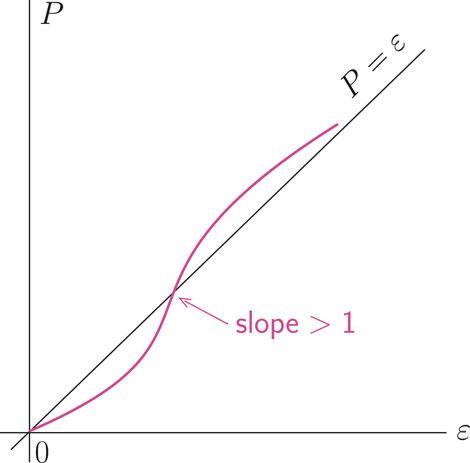
Figure 1. An illustration of the equivalence between
The EOS of nuclear matter may be strongly nonlinear depending on both the internal interactions and the external environment/constraint of the system; this means that
The upper bound for
There are fundamental physics issues regarding both strong-field gravity and supradense matter EOS and their couplings. What is gravity? Is a new theory of light and matter needed to explain what happens at very high energies and temperatures? These are among the eleven greatest unanswered physics questions for this century, as identified in 2003 by the National Research Council of the U.S. National Academies (National Research Council, 2003). Compact stars provide far more extreme conditions necessary to test possible answers to these questions than terrestrial laboratories. A gravity-matter duality exists in theories describing NS properties; see, for example, Psaltis (2008) and Shao (2019) for recent reviews. Neutron stars are natural testing grounds for our knowledge of these issues. Some of their observational properties may help break the gravity-matter duality; see, for example, DeDeo and Psaltis (2003), Wen et al. (2009), Lin et al. (2014), He et al. (2015), Yang et al. (2020). Naturally, these issues are intertwined, and one may gain new insights into the EOS of supradense matter by analyzing features of strong-field gravity or vice versa. The matter-gravity duality reflects the deep connection between the microscopic physics of supradense matter and the powerful gravity effects of NSs. They both must be fully understood to unravel mysteries associated with compact objects in the Universe. In this brief review, we summarize the main physics motivation, formalism, and results of our recent efforts to gain new insights into the EOS of supradense matter in NS cores by perturbatively dissecting the intrinsic structures of the Tolman–Oppenheimer–Volkoff (TOV) equations (Tolman, 1939; Oppenheimer and Volkoff, 1939) without using any input nuclear EOS. For more details, we refer the readers to our original publications in Cai et al. (2023b), (Cai et al., 2023a), Cai and Li (2024a), and (Cai and Li, 2024b).
The rest of this article is organized as follows: First, in Section 2, we make a few remarks about some existing constraints on the EOS of supradense NS matter. Section 3 introduces the scaled TOV equations from which one can execute an effective perturbative expansion; the central SSS is obtained in Section 4. We then infer an upper bound for the ratio
2 Remarks on some existing constraints on supradense NS matter
Understanding the EOS of supradense matter has long been an important issue in both nuclear physics and astrophysics (Walecka, 1974; Chin, 1977; Freedman and McLerran, 1977; Baluni, 1978; Wiringa et al., 1988; Akmal et al., 1998; Migdal, 1978; Morley and Kislinger, 1979; Shuryak, 1980; Bailin and Love, 1984; Lattimer and Prakash, 2001; Danielewicz et al., 2002; Steiner et al., 2005; Lattimer and Prakash, 2007; Alford et al., 2008; Li et al., 2008; Watts et al., 2016; Özel and Freire, 2016; Oertel et al., 2017; Vidaña, 2018). In fact, it has been an outstanding driver at many research facilities in both fields. For example, finding the EOS of the densest visible matter existing in our Universe is an ultimate goal of astrophysics in the era of high-precision multimessenger astronomy (Sathyaprakash et al., 2019). However, despite much effort and progress made during the last few decades using various observational data and models, especially since the discovery of GW170817 (Abbott et al., 2017a; 2018), GW190425 (Abbott et al., 2020a), GW190814 (Abbott et al., 2020b) and the recent NASA’s NICER (Neutron Star Interior Composition Explorer) mass-radius measurements for PSR J0740 + 6,620 (Fonseca et al., 2021; Riley et al., 2021; Miller et al., 2021; Salmi et al., 2022; Dittmann et al., 2024; Salmi et al., 2024), PSR J0030 + 0451 (Riley et al., 2019; Miller et al., 2019; Vinciguerra et al., 2024), and PSR J0437-4715 (Choudhury et al., 2024; Reardon et al., 2024), knowledge about the core NS EOS remains ambiguous and quite elusive (see, for example, Bose et al., 2018; De et al., 2018; Fattoyev et al., 2018; Lim and Holt, 2018; Most et al., 2018; Radice et al., 2018; Tews et al., 2018; Zhang et al., 2018; Bauswein et al., 2019; 2020; Baym et al., 2019; McLerran and Reddy, 2019; Most et al., 2019; Annala et al., 2020; 2023; Sedrakian et al., 2020; Zhao and Lattimer, 2020; Weih et al., 2020; Xie and Li, 2019; 2020; 2021; Drischler et al., 2020; 2021a; Li et al., 2020; Bombaci et al., 2021; Al-Mamun et al., 2021; Nathanail et al., 2021; Raaijmakers et al., 2021; Altiparmak et al., 2022; Breschi et al., 2022; Komoltsev and Kurkela, 2022; Perego et al., 2022; Huang et al., 2022; Tan et al., 2022a; b; Brandes et al., 2023b; a; Gorda et al., 2023; Han et al., 2023; Jiang et al., 2023; Ofengeim et al., 2023; Mroczek et al., 2023; Raithel and Most, 2023; Somasundaram et al., 2023; Zhang and Li, 2020; 2021; 2023b; a; Pang et al., 2023; Fujimoto et al., 2024; Providência et al., 2024; Rutherford et al., 2024). See recent reviews for additional discussion (for example, Baym et al., 2018; Baiotti, 2019; Li et al., 2019; Orsaria et al., 2019; Blaschke et al., 2020; Capano et al., 2020; Chatziioannou, 2020; Burgio et al., 2021; Dexheimer et al., 2021; Drischler et al., 2021b; Lattimer, 2021; Li et al., 2021; Lovato et al., 2022; Sedrakian et al., 2023; Kumar et al., 2024; Sorensen et al., 2024; Tsang et al., 2024).
Extensive theoretical investigations about the EOS of supradense NS matter have been conducted, and many interesting predictions have been made. For example, the realization of approximate conformal symmetry of quark matter at extremely high densities
For the URFG,
This prompts the question of whether the bound
Based on the dimensional analysis and the definition of sound speed, we may write out the SSS generally as (we use the units in which
where
3 Analyzing scaled TOV equations, mass/radius scalings, and central SSS
The TOV equations describe the radial evolution of pressure
Here, the mass
respectively. Here, the second relations follow with
where
together with the smallness of
near NS centers enable us to develop effective/controllable expansion of a relevant quantity
Here,
which defines the NS radius
Starting from the scaled TOV Equation 7, we can show that both
the expansion for
etc., and all the odd terms of
Evaluating it at
According to the definition of NS radius given in Equation 11, we obtain from the truncated equation
Similarly, the NS mass scales as Cai et al. (2023b).
Consequently, the NS compactness
For small
The maximum-mass configuration (or the TOV configuration) along the NS M-R curve is a special point. Consider a typical NS M-R curve near the TOV configuration from right to left, the radius
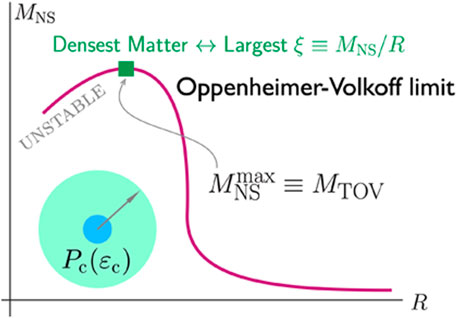
Figure 2. An illustration of the TOV configuration on a typical mass-radius sequence. The cores of NSs at the TOV configuration contain the densest visible matter in our Universe; the compactness
Using the NS mass scaling of Equation 21, we obtain
Inversely, we obtain the expression for the central SSS (Cai et al., 2023a; Cai and Li, 2024a),
where
We see that the SSS is in the form of Equation 4. For NSs at the TOV configuration, we have
because now,
That is, as
For verification, the scaling
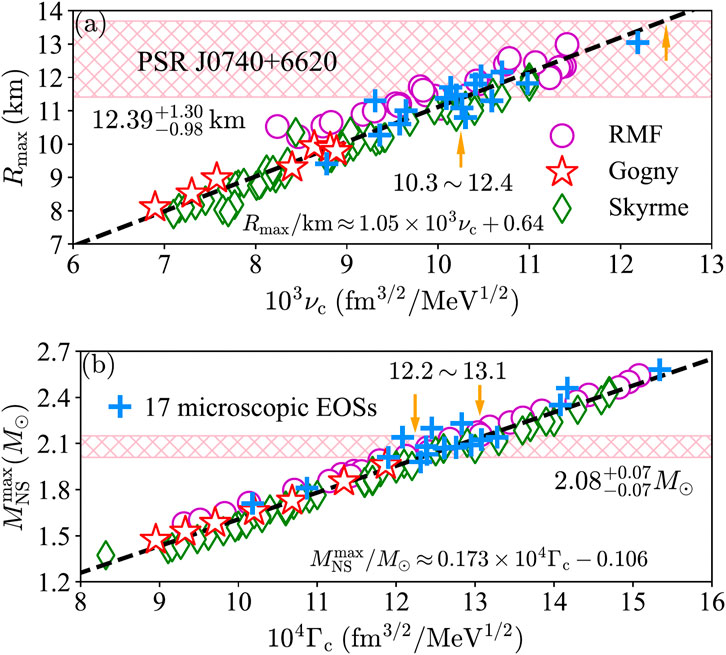
Figure 3. Panel (A): the
By performing linear fits of the results obtained from the EOS samples, the quantitative scaling relations are (Cai et al., 2023b; Cai et al., 2023a; Cai and Li, 2024a)
with their Pearson’s coefficients approximately 0.958 and 0.986, respectively. Here,
4 Gravitational upper bound on
Based on Equation 27 and the principle of causality of SR, we obtain immediately (Cai et al., 2023b)
Although the causality condition requires apparently
A small
The bound (31) is obtained under the specific condition that it gives the upper limit for
(a) How does
(b) How does the limit
(c) By combining (a) and (b), how does
For the first question, because the pressure
Generally,
which implies that
Combining the above three aspects, we find
Nevertheless, the validity of this conclusion is limited to small
Next, we consider the Newtonian limit where
and the principle of causality requires

Figure 4. An illustration of the gravitational effects on supradense matter EOS in NSs: The nonlinearity of Newtonian gravity reduces the upper bound for
We emphasize that all of the analyses above based on SR and GR are general from analyzing perturbatively analytical solutions of the scaled TOV equations without using any specific nuclear EOS. Because the TOV equations are the results of a hydrodynamical equilibrium of NS matter in the environment of a strong-field gravity from extremizing the total action of the matter-gravity system, features revealed above from SR and GR inherent in the TOV equations must be matched by the nuclear EOS. This requirement can then put strong constraints on the latter. In particular, the upper bound for
In the following, we provide an example illustrating how the strong-field gravity can restrict the behavior of superdense matter in NSs. For simplicity, we assume that the energy per baryon takes the following form:
where the first term is the kinetic energy of an FFG of neutrons in NSs with
Thus,
where
The expression for the coefficient
which depends on
Now, neither solution is physical because
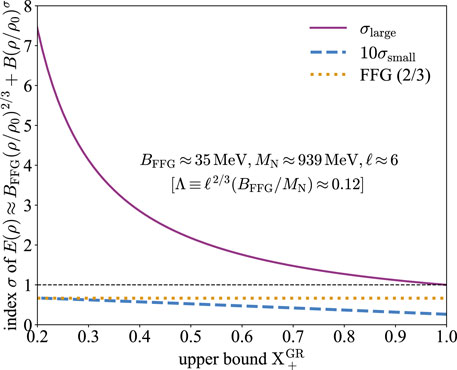
Figure 5. Gravitational impact on the EOS of supradense matter and the underlying strong interaction in NSs: the general
Because the parameterization (36) is over-simplified, more density-dependent terms should be included for general cases; that is,
These constraints for
5 Gravitational lower bound on trace anomaly
After the above general demonstration on the gravitational upper limit for
It is very interesting to notice that such a GR bound on
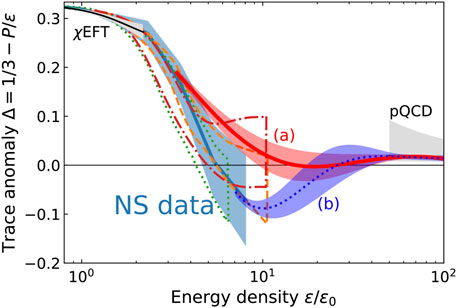
Figure 6. Trace anomaly
The analysis in Ecker and Rezzolla (2022) using an agnostic EOS showed that
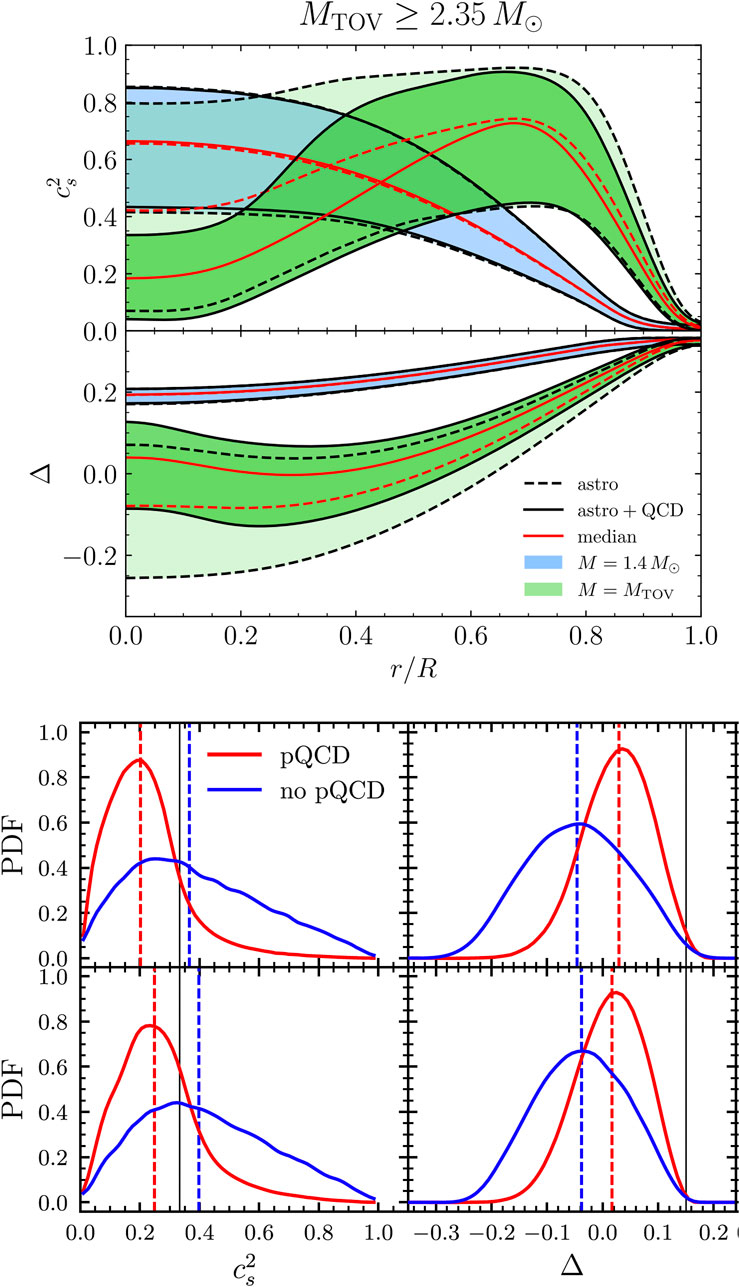
Figure 7. Upper panel: radial dependence of
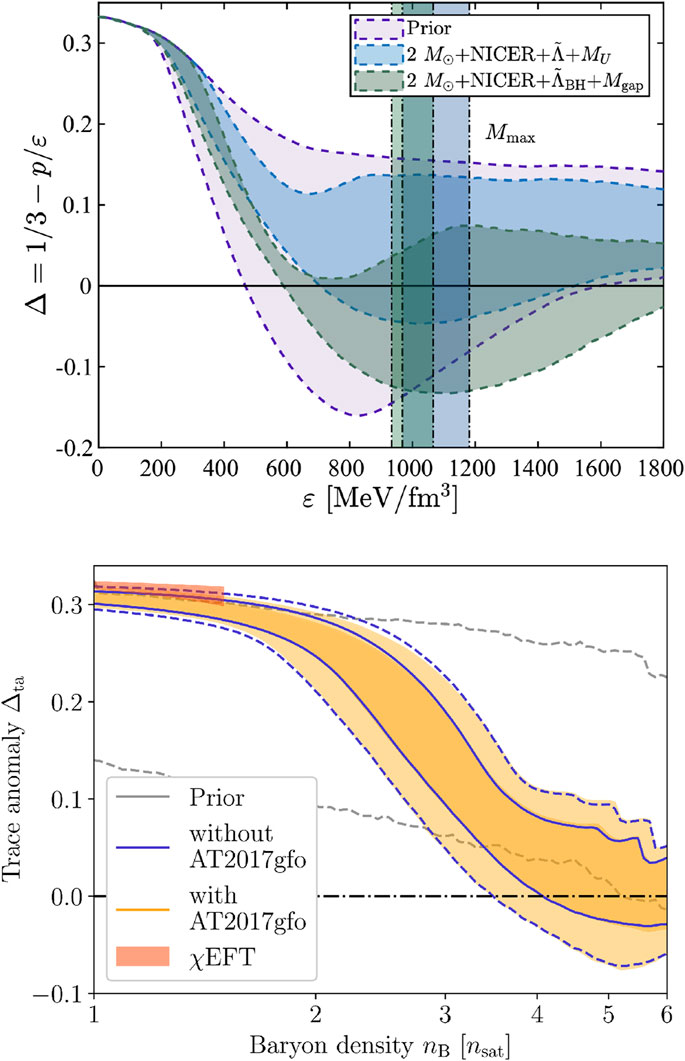
Figure 8. Two typical inferences on the energy density (or baryon density) dependence of
A very recent study classified the EOSs by using the local and/or global derivative

Figure 9. Upper left panel: density dependence of
The above constraints on the lower limit of
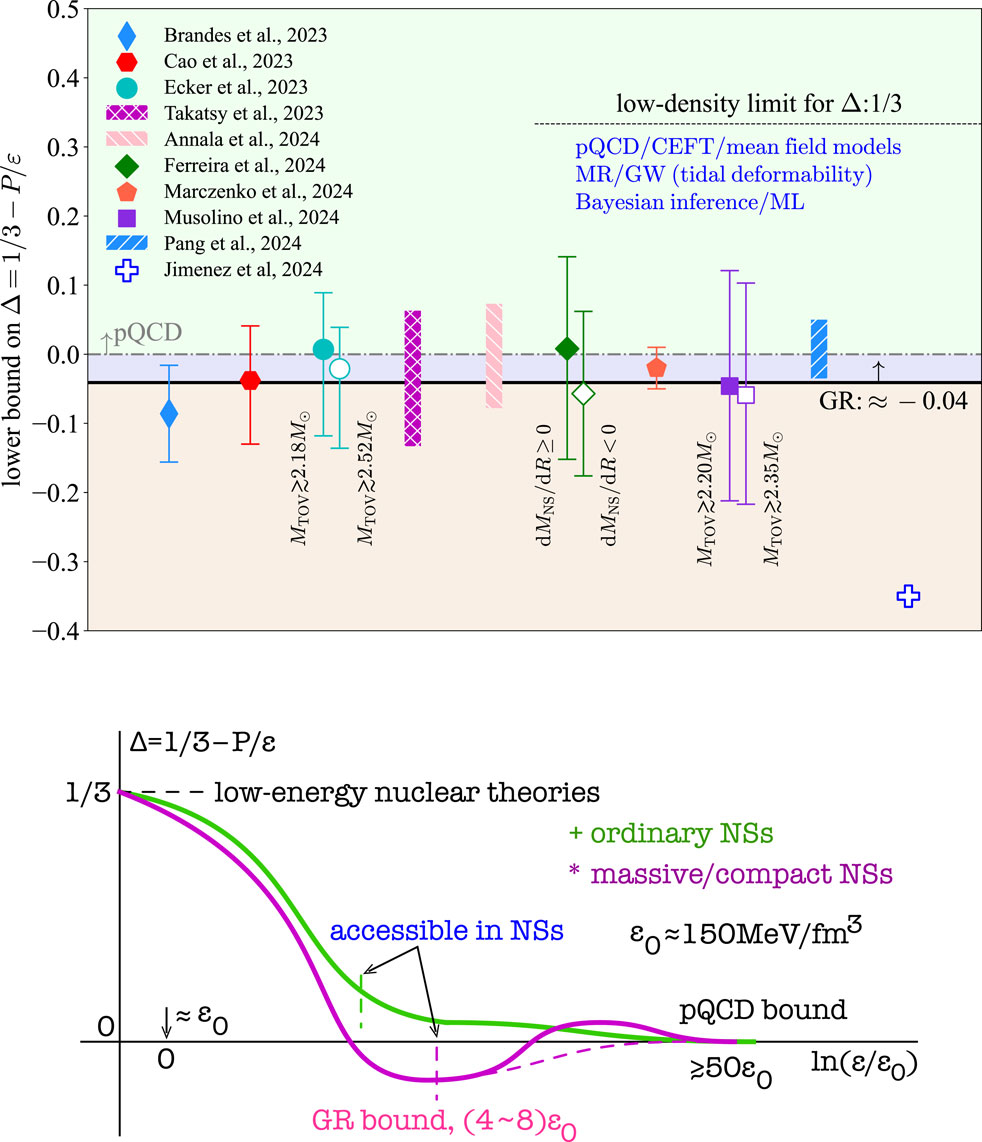
Figure 10. Upper panel: Summary of current constraints on the lower bound of trace anomaly
How relevant are the GR or pQCD limits for understanding the trace anomaly
Keeping a positive attitude in our exploration of a completely uncharted area, we make a few more comments below on how the trace anomaly may reach the pQCD limit. As a negative
6 Summary and future perspectives
In summary, perturbative analyses of the scaled TOV equations reveal interesting new insights into properties of supradense matter in NS cores without using any input nuclear EOS. In specific, the ratio
1. The upper limit for
2. Ironically, the upper bound
Author contributions
B-JC: writing–original draft and writing–review and editing. B-AL: writing–original draft and writing–review and editing.
Funding
The author(s) declare that financial support was received for the research, authorship, and/or publication of this article. This work was supported in part by the U.S. Department of Energy, Office of Science, under Award Number DE-SC0013702 and the CUSTIPEN (China-U.S. Theory Institute for Physics with Exotic Nuclei) under the U.S. Department of Energy Grant No. DE-SC0009971.
Acknowledgments
We would like to thank James Lattimer and Zhen Zhang for their helpful discussions.
Conflict of interest
Author B-JC was employed by Shadow Creator, Inc.
The remaining author declares that the research was conducted in the absence of any commercial or financial relationships that could be construed as a potential conflict of interest.
Generative AI statement
The author(s) declare that no generative AI was used in the creation of this manuscript.
Publisher’s note
All claims expressed in this article are solely those of the authors and do not necessarily represent those of their affiliated organizations, or those of the publisher, the editors, and the reviewers. Any product that may be evaluated in this article, or claim that may be made by its manufacturer, is not guaranteed or endorsed by the publisher.
References
Abbott, B. P., Abbott, R., Abbott, T. D., Abraham, S., Acernese, F., Ackley, K., et al. (2020a). Gw190425: observation of a compact binary coalescence with total mass 3.4 m⊙. Astrophysical J. Lett. 892, L3. doi:10.3847/2041-8213/ab75f5
Abbott, B. P., Abbott, R., Abbott, T. D., Acernese, F., Ackley, K., Adams, C., et al. (2017a). Gw170817: observation of gravitational waves from a binary neutron star inspiral. Phys. Rev. Lett. 119, 161101. doi:10.1103/PhysRevLett.119.161101
Abbott, B. P., Abbott, R., Abbott, T. D., Acernese, F., Ackley, K., Adams, C., et al. (2017b). Multi-messenger observations of a binary neutron star merger. Astrophysical J. Lett. 848, L12. doi:10.3847/2041-8213/aa91c9
Abbott, B. P., Abbott, R., Abbott, T. D., Acernese, F., Ackley, K., Adams, C., et al. (2018). Gw170817: measurements of neutron star radii and equation of state. Phys. Rev. Lett. 121, 161101. doi:10.1103/PhysRevLett.121.161101
Abbott, R., Abbott, T. D., Abraham, S., Acernese, F., Ackley, K., Adams, C., et al. (2020b). Gw190814: gravitational waves from the coalescence of a 23 solar mass black hole with a 2.6 solar mass compact object. Astrophysical J. Lett. 896, L44. doi:10.3847/2041-8213/ab960f
Akmal, A., Pandharipande, V. R., and Ravenhall, D. G. (1998). Equation of state of nucleon matter and neutron star structure. Phys. Rev. C 58, 1804–1828. doi:10.1103/PhysRevC.58.1804
Alford, M. G., Schmitt, A., Rajagopal, K., and Schäfer, T. (2008). Color superconductivity in dense quark matter. Rev. Mod. Phys. 80, 1455–1515. doi:10.1103/RevModPhys.80.1455
Al-Mamun, M., Steiner, A. W., Nättilä, J., Lange, J., O’Shaughnessy, R., Tews, I., et al. (2021). Combining electromagnetic and gravitational-wave constraints on neutron-star masses and radii. Phys. Rev. Lett. 126, 061101. doi:10.1103/PhysRevLett.126.061101
Altiparmak, S., Ecker, C., and Rezzolla, L. (2022). On the sound speed in neutron stars. Astrophysical J. Lett. 939, L34. doi:10.3847/2041-8213/ac9b2a
Annala, E., Gorda, T., Hirvonen, J., Komoltsev, O., Kurkela, A., Nättilä, J., et al. (2023). Strongly interacting matter exhibits deconfined behavior in massive neutron stars. Nat. Commun. 14, 8451. doi:10.1038/s41467-023-44051-y
Annala, E., Gorda, T., Kurkela, A., Nättilä, J., and Vuorinen, A. (2020). Evidence for quark-matter cores in massive neutron stars. Nat. Phys. 16, 907–910. doi:10.1038/s41567-020-0914-9
Antoniadis, J., Freire, P. C. C., Wex, N., Tauris, T. M., Lynch, R. S., van Kerkwijk, M. H., et al. (2013). A massive pulsar in a compact relativistic binary. Science 340, 448, 1233232. doi:10.1126/science.1233232
Arzoumanian, Z., Brazier, A., Burke-Spolaor, S., Chamberlin, S., Chatterjee, S., Christy, B., et al. (2018). The nanograv 11-year data set: high-precision timing of 45 millisecond pulsars. Astrophysical J. Suppl. Ser. 235, 37. doi:10.3847/1538-4365/aab5b0
Bailin, D., and Love, A. (1984). Superfluidity and superconductivity in relativistic fermion systems. Phys. Rep. 107, 325–385. doi:10.1016/0370-1573(84)90145-5
Baiotti, L. (2019). Gravitational waves from neutron star mergers and their relation to the nuclear equation of state. Prog. Part. Nucl. Phys. 109, 103714. doi:10.1016/j.ppnp.2019.103714
Baiotti, L., and Rezzolla, L. (2017). Binary neutron star mergers: a review of einstein’s richest laboratory. Rep. Prog. Phys. 80, 096901. doi:10.1088/1361-6633/aa67bb
Baluni, V. (1978). Non-abelian gauge theories of fermi systems: quantum-chromodynamic theory of highly condensed matter. Phys. Rev. D. 17, 2092–2121. doi:10.1103/PhysRevD.17.2092
Baumgarte, S., and Shapiro, S. (2010). Numerical relativity: solving einstein’s equations on the computer. Cambridge: Cambridge Unversity Press.
Bauswein, A., Bastian, N.-U. F., Blaschke, D. B., Chatziioannou, K., Clark, J. A., Fischer, T., et al. (2019). Identifying a first-order phase transition in neutron-star mergers through gravitational waves. Phys. Rev. Lett. 122, 061102. doi:10.1103/PhysRevLett.122.061102
Bauswein, A., Blacker, S., Vijayan, V., Stergioulas, N., Chatziioannou, K., Clark, J. A., et al. (2020). Equation of state constraints from the threshold binary mass for prompt collapse of neutron star mergers. Phys. Rev. Lett. 125, 141103. doi:10.1103/PhysRevLett.125.141103
Baym, G., Furusawa, S., Hatsuda, T., Kojo, T., and Togashi, H. (2019). New neutron star equation of state with quark–hadron crossover. Astrophysical J. 885, 42. doi:10.3847/1538-4357/ab441e
Baym, G., Hatsuda, T., Kojo, T., Powell, P. D., Song, Y., and Takatsuka, T. (2018). From hadrons to quarks in neutron stars: a review. Rep. Prog. Phys. 81, 056902. doi:10.1088/1361-6633/aaae14
Baym, G., Pethick, C., and Sutherland, P. (1971). The ground state of matter at high densities: equation of state and stellar models. Astrophysical J. 170, 299. doi:10.1086/151216
Bjorken, J. D. (1983). Highly relativistic nucleus-nucleus collisions: the central rapidity region. Phys. Rev. D. 27, 140–151. doi:10.1103/PhysRevD.27.140
Blaschke, D., Ayriyan, A., Alvarez-Castillo, D. E., and Grigorian, H. (2020). Was GW170817 a canonical neutron star merger? Bayesian analysis with a third family of compact stars. Universe 6, 81. doi:10.3390/universe6060081
Bloch, I., Dalibard, J., and Zwerger, W. (2008). Many-body physics with ultracold gases. Rev. Mod. Phys. 80, 885–964. doi:10.1103/RevModPhys.80.885
Bombaci, I., Drago, A., Logoteta, D., Pagliara, G., and Vidaña, I. (2021). Was gw190814 a black hole–strange quark star system? Phys. Rev. Lett. 126, 162702. doi:10.1103/PhysRevLett.126.162702
Bose, S., Chakravarti, K., Rezzolla, L., Sathyaprakash, B. S., and Takami, K. (2018). Neutron-star radius from a population of binary neutron star mergers. Phys. Rev. Lett. 120, 031102. doi:10.1103/PhysRevLett.120.031102
Brandes, L., Weise, W., and Kaiser, N. (2023a). Evidence against a strong first-order phase transition in neutron star cores: impact of new data. Phys. Rev. D. 108, 094014. doi:10.1103/PhysRevD.108.094014
Brandes, L., Weise, W., and Kaiser, N. (2023b). Inference of the sound speed and related properties of neutron stars. Phys. Rev. D. 107, 014011. doi:10.1103/PhysRevD.107.014011
Breschi, M., Bernuzzi, S., Godzieba, D., Perego, A., and Radice, D. (2022). Constraints on the maximum densities of neutron stars from postmerger gravitational waves with third-generation observations. Phys. Rev. Lett. 128, 161102. doi:10.1103/PhysRevLett.128.161102
Burgio, G., Schulze, H.-J., Vidaña, I., and Wei, J.-B. (2021). Neutron stars and the nuclear equation of state. Prog. Part. Nucl. Phys. 120, 103879. doi:10.1016/j.ppnp.2021.103879
Cai, B.-J., and Li, B.-A. (2016). Symmetry energy of cold nucleonic matter within a relativistic mean field model encapsulating effects of high-momentum nucleons induced by short-range correlations. Phys. Rev. C 93, 014619. doi:10.1103/PhysRevC.93.014619
Cai, B.-J., and Li, B.-A. (2024a). Strong gravity extruding peaks in speed of sound profiles of massive neutron stars. Phys. Rev. D. 109, 083015. doi:10.1103/PhysRevD.109.083015
Cai, B.-J., and Li, B.-A. (2024b). Unraveling trace anomaly of supradense matter via neutron star compactness scaling. arXiv:2406, 05025.
Cai, B.-J., Li, B.-A., and Zhang, Z. (2023a). Central speed of sound, the trace anomaly, and observables of neutron stars from a perturbative analysis of scaled tolman-oppenheimer-volkoff equations. Phys. Rev. D. 108, 103041. doi:10.1103/PhysRevD.108.103041
Cai, B.-J., Li, B.-A., and Zhang, Z. (2023b). Core states of neutron stars from anatomizing their scaled structure equations. Astrophysical J. 952, 147. doi:10.3847/1538-4357/acdef0
Cao, Z., and Chen, L.-W. (2023). Neutron star vs quark star in the multimessenger era. arXiv:2308, 16783.
Capano, C. D., Tews, I., Brown, S. M., Margalit, B., De, S., Kumar, S., et al. (2020). Stringent constraints on neutron-star radii from multimessenger observations and nuclear theory. Nat. Astron 4 (4), 625–632. doi:10.1038/s41550-020-1014-6
Chandrasekhar, S. (2010). An introduction to the study of stellar structure. New York: Dover Press. Chapter 4).
Chatziioannou, K. (2020). Neutron star tidal deformability and equation of state constraints. Gen. Rel. Grav. 52, 109. doi:10.1007/s10714-020-02754-3
Chin, S. (1977). A relativistic many-body theory of high density matter. Ann. Phys. 108, 301–367. doi:10.1016/0003-4916(77)90016-1
Choudhury, D., Salmi, T., Vinciguerra, S., Riley, T. E., Kini, Y., Watts, A. L., et al. (2024). A nicer view of the nearest and brightest millisecond pulsar: psr j0437–4715. Astrophysical J. Lett. 971, L20. doi:10.3847/2041-8213/ad5a6f
Danielewicz, P., Lacey, R., and Lynch, W. G. (2002). Determination of the equation of state of dense matter. Science 298, 1592–1596. doi:10.1126/science.1078070
De, S., Finstad, D., Lattimer, J. M., Brown, D. A., Berger, E., and Biwer, C. M. (2018). Tidal deformabilities and radii of neutron stars from the observation of gw170817. Phys. Rev. Lett. 121, 091102. doi:10.1103/PhysRevLett.121.091102
DeDeo, S., and Psaltis, D. (2003). Towards new tests of strong-field gravity with measurements of surface atomic line redshifts from neutron stars. Phys. Rev. Lett. 90, 141101. doi:10.1103/PhysRevLett.90.141101
Demorest, P. B., Pennucci, T., Ransom, S. M., Roberts, M. S. E., and Hessels, J. W. T. (2010). A two-solar-mass neutron star measured using shapiro delay. Nature 467, 1081–1083. doi:10.1038/nature09466
Dexheimer, V., Noronha, J., Noronha-Hostler, J., Yunes, N., and Ratti, C. (2021). Future physics perspectives on the equation of state from heavy ion collisions to neutron stars. J. Phys. G Nucl. Part. Phys. 48, 073001. doi:10.1088/1361-6471/abe104
Dittmann, A. J., Miller, M. C., Lamb, F. K., Holt, I., Chirenti, C., Wolff, M. T., et al. (2024). A more precise measurement of the radius of psr j0740+6620 using updated nicer data. Astrophysical Jouranl. doi:10.3847/1538-4357/ad5f1e
Drischler, C., Furnstahl, R. J., Melendez, J. A., and Phillips, D. R. (2020). How well do we know the neutron-matter equation of state at the densities inside neutron stars? a bayesian approach with correlated uncertainties. Phys. Rev. Lett. 125, 202702. doi:10.1103/PhysRevLett.125.202702
Drischler, C., Han, S., Lattimer, J. M., Prakash, M., Reddy, S., and Zhao, T. (2021a). Limiting masses and radii of neutron stars and their implications. Phys. Rev. C 103, 045808. doi:10.1103/PhysRevC.103.045808
Drischler, C., Holt, J., and Wellenhofer, C. (2021b). Chiral effective field theory and the high-density nuclear equation of state. Annu. Rev. Nucl. Part. Sci. 71, 403–432. doi:10.1146/annurev-nucl-102419-041903
Ecker, C., and Rezzolla, L. (2022). Impact of large-mass constraints on the properties of neutron stars. Mon. Notices R. Astronomical Soc. 519, 2615–2622. doi:10.1093/mnras/stac3755
Essick, R., Tews, I., Landry, P., and Schwenk, A. (2021). Astrophysical constraints on the symmetry energy and the neutron skin of 208Pb with minimal modeling assumptions. Phys. Rev. Lett. 127, 192701. doi:10.1103/PhysRevLett.127.192701
Fattoyev, F. J., Piekarewicz, J., and Horowitz, C. J. (2018). Neutron skins and neutron stars in the multimessenger era. Phys. Rev. Lett. 120, 172702. doi:10.1103/PhysRevLett.120.172702
Ferreira, M., and Providência, C. m. c. (2024). Constraining neutron star matter from the slope of the mass-radius curves. Phys. Rev. D. 110, 063018. doi:10.1103/PhysRevD.110.063018
Fonseca, E., Cromartie, H. T., Pennucci, T. T., Ray, P. S., Kirichenko, A. Y., Ransom, S. M., et al. (2021). Refined mass and geometric measurements of the high-mass psr j0740+6620. Astrophysical J. Lett. 915, L12. doi:10.3847/2041-8213/ac03b8
Freedman, B. A., and McLerran, L. D. (1977). Fermions and gauge vector mesons at finite temperature and density. iii. the ground-state energy of a relativistic quark gas. Phys. Rev. D. 16, 1169–1185. doi:10.1103/PhysRevD.16.1169
Fujimoto, Y., Fukushima, K., Kamata, S., and Murase, K. (2024). Uncertainty quantification in the machine-learning inference from neutron star probability distribution to the equation of state. Phys. Rev. D. 110, 034035. doi:10.1103/PhysRevD.110.034035
Fujimoto, Y., Fukushima, K., McLerran, L. D., and Praszałowicz, M. (2022). Trace anomaly as signature of conformality in neutron stars. Phys. Rev. Lett. 129, 252702. doi:10.1103/PhysRevLett.129.252702
Giorgini, S., Pitaevskii, L. P., and Stringari, S. (2008). Theory of ultracold atomic fermi gases. Rev. Mod. Phys. 80, 1215–1274. doi:10.1103/RevModPhys.80.1215
Gorda, T., Komoltsev, O., and Kurkela, A. (2023). Ab-initio qcd calculations impact the inference of the neutron-star-matter equation of state. Astrophysical J. 950, 107. doi:10.3847/1538-4357/acce3a
Han, M.-Z., Huang, Y.-J., Tang, S.-P., and Fan, Y.-Z. (2023). Plausible presence of new state in neutron stars with masses above 0.98mtov. Sci. Bull. 68, 913–919. doi:10.1016/j.scib.2023.04.007
He, X.-T., Fattoyev, F. J., Li, B.-A., and Newton, W. G. (2015). Impact of the equation-of-state–gravity degeneracy on constraining the nuclear symmetry energy from astrophysical observables. Phys. Rev. C 91, 015810. doi:10.1103/PhysRevC.91.015810
Huang, Y.-J., Baiotti, L., Kojo, T., Takami, K., Sotani, H., Togashi, H., et al. (2022). Merger and postmerger of binary neutron stars with a quark-hadron crossover equation of state. Phys. Rev. Lett. 129, 181101. doi:10.1103/PhysRevLett.129.181101
Iida, K., and Sato, K. (1997). Spin down of neutron stars and compositional transitions in the cold crustal matter. Astrophysical J. 477, 294–312. doi:10.1086/303685
Jiang, J.-L., Ecker, C., and Rezzolla, L. (2023). Bayesian analysis of neutron-star properties with parameterized equations of state: the role of the likelihood functions. Astrophysical J. 949, 11. doi:10.3847/1538-4357/acc4be
Jiménez, J. C., Lazzari, L., and Gonçalves, V. P. (2024). How the qcd trace anomaly behaves at the core of twin stars? arXiV:2408, 11614.
Komoltsev, O., and Kurkela, A. (2022). How perturbative qcd constrains the equation of state at neutron-star densities. Phys. Rev. Lett. 128, 202701. doi:10.1103/PhysRevLett.128.202701
Koranda, S., Stergioulas, N., and Friedman, J. L. (1997). Upper limits set by causality on the rotation and mass of uniformly rotating relativistic stars. Astrophysical J. 488, 799–806. doi:10.1086/304714
Kumar, R., Dexheimer, V., Jahan, J., Noronha, J., Noronha-Hostler, J., Ratti, C., et al. (2024). Theoretical and experimental constraints for the equation of state of dense and hot matter. Living Rev. Relativ. 27, 3. doi:10.1007/s41114-024-00049-6
Kurkela, A., Romatschke, P., and Vuorinen, A. (2010). Cold quark matter. Phys. Rev. D. 81, 105021. doi:10.1103/PhysRevD.81.105021
Kyutoku, K., Shibata, M., and Taniguchi, K. (2021). Coalescence of black hole–neutron star binaries. Living Rev. Relativ. 24, 5. doi:10.1007/s41114-021-00033-4
Lattimer, J. M. (2021). Neutron stars and the nuclear matter equation of state. Ann. Rev. Nucl. Part. Sci. 71, 433–464. doi:10.1146/annurev-nucl-102419-124827
Lattimer, J. M., and Prakash, M. (2001). Neutron star structure and the equation of state. Astrophysical J. 550, 426–442. doi:10.1086/319702
Lattimer, J. M., and Prakash, M. (2007). Neutron star observations: prognosis for equation of state constraints. Phys. Rep. 442, 109–165. The Hans Bethe Centennial Volume 1906-2006. doi:10.1016/j.physrep.2007.02.003
Li, A., Zhu, Z. Y., Zhou, E. P., Dong, J. M., Hu, J. N., and Xia, C. J. (2020). Neutron star equation of state: quark mean-field (QMF) modeling and applications. JHEAp 28, 19–46. doi:10.1016/j.jheap.2020.07.001
Li, B.-A. (2017). Nuclear symmetry energy extracted from laboratory experiments. Nucl. Phys. News 27, 7–11. doi:10.1080/10619127.2017.1388681
Li, B.-A., Cai, B.-J., Chen, L.-W., and Xu, J. (2018). Nucleon effective masses in neutron-rich matter. Prog. Part. Nucl. Phys. 99, 29–119. doi:10.1016/j.ppnp.2018.01.001
Li, B.-A., Cai, B.-J., Xie, W.-J., and Zhang, N.-B. (2021). Progress in constraining nuclear symmetry energy using neutron star observables since gw170817. Universe 7, 182. doi:10.3390/universe7060182
Li, B.-A., Chen, L.-W., and Ko, C. M. (2008). Recent progress and new challenges in isospin physics with heavy-ion reactions. Phys. Rep. 464, 113–281. doi:10.1016/j.physrep.2008.04.005
Li, B.-A., Krastev, P. G., Wen, D.-H., and Zhang, N.-B. (2019). Towards understanding astrophysical effects of nuclear symmetry energy. Eur. Phys. J. A 55, 117. doi:10.1140/epja/i2019-12780-8
Li, F., Cai, B.-J., Zhou, Y., Jiang, W.-Z., and Chen, L.-W. (2022). Effects of isoscalar- and isovector-scalar meson mixing on neutron star structure. Astrophysical J. 929, 183. doi:10.3847/1538-4357/ac5e2a
Lim, Y., and Holt, J. W. (2018). Neutron star tidal deformabilities constrained by nuclear theory and experiment. Phys. Rev. Lett. 121, 062701. doi:10.1103/PhysRevLett.121.062701
Lin, W., Li, B.-A., Chen, L.-W., Wen, D.-H., and Xu, J. (2014). Breaking the EOS-gravity degeneracy with masses and pulsating frequencies of neutron stars. J. Phys. G. 41, 075203. doi:10.1088/0954-3899/41/7/075203
Lovato, A., Dore, T., Pisarski, R. D., Schenke, B., Chatziioannou, K., Read, J. S., et al. (2022). Long range plan: dense matter theory for heavy-ion collisions and neutron stars. arXiv:2211, 02224.
Marczenko, M., Redlich, K., and Sasaki, C. (2024). Curvature of the energy per particle in neutron stars. Phys. Rev. D. 109, L041302. doi:10.1103/PhysRevD.109.L041302
McLerran, L., and Reddy, S. (2019). Quarkyonic matter and neutron stars. Phys. Rev. Lett. 122, 122701. doi:10.1103/PhysRevLett.122.122701
Migdal, A. B. (1978). Pion fields in nuclear matter. Rev. Mod. Phys. 50, 107–172. doi:10.1103/RevModPhys.50.107
Miller, M. C., Lamb, F. K., Dittmann, A. J., Bogdanov, S., Arzoumanian, Z., Gendreau, K. C., et al. (2019). Psr j0030+0451 mass and radius from nicer data and implications for the properties of neutron star matter. Astrophysical J. Lett. 887, L24. doi:10.3847/2041-8213/ab50c5
Miller, M. C., Lamb, F. K., Dittmann, A. J., Bogdanov, S., Arzoumanian, Z., Gendreau, K. C., et al. (2021). The radius of psr j0740+6620 from nicer and xmm-Newton data. Astrophysical J. Lett. 918, L28. doi:10.3847/2041-8213/ac089b
Morley, P., and Kislinger, M. (1979). Relativistic many-body theory, quantum chromodynamics and neutron stars/supernova. Phys. Rep. 51, 63–110. doi:10.1016/0370-1573(79)90005-X
Most, E. R., Papenfort, L. J., Dexheimer, V., Hanauske, M., Schramm, S., Stöcker, H., et al. (2019). Signatures of quark-hadron phase transitions in general-relativistic neutron-star mergers. Phys. Rev. Lett. 122, 061101. doi:10.1103/PhysRevLett.122.061101
Most, E. R., Weih, L. R., Rezzolla, L., and Schaffner-Bielich, J. (2018). New constraints on radii and tidal deformabilities of neutron stars from gw170817. Phys. Rev. Lett. 120, 261103. doi:10.1103/PhysRevLett.120.261103
Mroczek, D., Miller, M. C., Noronha-Hostler, J., and Yunes, N. (2023). Nontrivial features in the speed of sound inside neutron stars. arXiv:2309.02345
Musolino, C., Ecker, C., and Rezzolla, L. (2024). On the maximum mass and oblateness of rotating neutron stars with generic equations of state. Astrophysical J. 962, 61. doi:10.3847/1538-4357/ad1758
Nathanail, A., Most, E. R., and Rezzolla, L. (2021). Gw170817 and gw190814: tension on the maximum mass. Astrophysical J. Lett. 908, L28. doi:10.3847/2041-8213/abdfc6
National Research Council (2003). Connecting quarks with the cosmos: eleven science questions for the new century. Washington, DC: The National academies Press.
Oertel, M., Hempel, M., Klähn, T., and Typel, S. (2017). Equations of state for supernovae and compact stars. Rev. Mod. Phys. 89, 015007. doi:10.1103/RevModPhys.89.015007
Ofengeim, D. D., Shternin, P. S., and Piran, T. (2023). Maximal mass neutron star as a key to superdense matter physics. Astron. Lett. 49, 567–574. doi:10.1134/s1063773723100055
Oppenheimer, J. R., and Volkoff, G. M. (1939). On massive neutron cores. Phys. Rev. 55, 374–381. doi:10.1103/PhysRev.55.374
Orsaria, M. G., Malfatti, G., Mariani, M., Ranea-Sandoval, I. F., García, F., Spinella, W. M., et al. (2019). Phase transitions in neutron stars and their links to gravitational waves. J. Phys. G Nucl. Part. Phys. 46, 073002. doi:10.1088/1361-6471/ab1d81
Özel, F., and Freire, P. (2016). Masses, radii, and the equation of state of neutron stars. Ann. Rev. Astron. Astrophys. 54, 401–440. doi:10.1146/annurev-astro-081915-023322
Pang, P. T. H., Dietrich, T., Coughlin, M. W., Bulla, M., Tews, I., Almualla, M., et al. (2023). An updated nuclear-physics and multi-messenger astrophysics framework for binary neutron star mergers. Nat. Commun. 14, 8352. doi:10.1038/s41467-023-43932-6
Pang, P. T. H., Sivertsen, L., Somasundaram, R., Dietrich, T., Sen, S., Tews, I., et al. (2024). Probing quarkyonic matter in neutron stars with the bayesian nuclear-physics multimessenger astrophysics framework. Phys. Rev. C 109, 025807. doi:10.1103/PhysRevC.109.025807
Perego, A., Logoteta, D., Radice, D., Bernuzzi, S., Kashyap, R., Das, A., et al. (2022). Probing the incompressibility of nuclear matter at ultrahigh density through the prompt collapse of asymmetric neutron star binaries. Phys. Rev. Lett. 129, 032701. doi:10.1103/PhysRevLett.129.032701
Providência, C., Malik, T., Albino, M. B., and Ferreira, M. (2024). “Relativistic description of the neutron star equation of state,”. Florida, United States: CRC Press, 111–143. chap. 5. doi:10.1201/9781003306580-5
Psaltis, D. (2008). Probes and tests of strong-field gravity with observations in the electromagnetic spectrum. Living Rev. rel. 11, 9. doi:10.12942/lrr-2008-9
Raaijmakers, G., Greif, S. K., Hebeler, K., Hinderer, T., Nissanke, S., Schwenk, A., et al. (2021). Constraints on the dense matter equation of state and neutron star properties from nicer’s mass–radius estimate of psr j0740+6620 and multimessenger observations. Astrophysical J. Lett. 918, L29. doi:10.3847/2041-8213/ac089a
Radice, D., Perego, A., Zappa, F., and Bernuzzi, S. (2018). Gw170817: joint constraint on the neutron star equation of state from multimessenger observations. Astrophysical J. Lett. 852, L29. doi:10.3847/2041-8213/aaa402
Raithel, C. A., and Most, E. R. (2023). Degeneracy in the inference of phase transitions in the neutron star equation of state from gravitational wave data. Phys. Rev. Lett. 130, 201403. doi:10.1103/PhysRevLett.130.201403
Reardon, D. J., Bailes, M., Shannon, R. M., Flynn, C., Askew, J., Bhat, N. D. R., et al. (2024). The neutron star mass, distance, and inclination from precision timing of the brilliant millisecond pulsar j0437-4715. Astrophysical J. Lett. 971, L18. doi:10.3847/2041-8213/ad614a
Riley, T. E., Watts, A. L., Bogdanov, S., Ray, P. S., Ludlam, R. M., Guillot, S., et al. (2019). A nicer view of psr j0030+0451: millisecond pulsar parameter estimation. Astrophysical J. Lett. 887, L21. doi:10.3847/2041-8213/ab481c
Riley, T. E., Watts, A. L., Ray, P. S., Bogdanov, S., Guillot, S., Morsink, S. M., et al. (2021). A nicer view of the massive pulsar psr j0740+6620 informed by radio timing and xmm-Newton spectroscopy. Astrophysical J. Lett. 918, L27. doi:10.3847/2041-8213/ac0a81
Romani, R. W., Kandel, D., Filippenko, A. V., Brink, T. G., and Zheng, W. (2022). Psr j0952-0607: the fastest and heaviest known galactic neutron star. Astrophysical J. Lett. 934, L17. doi:10.3847/2041-8213/ac8007
Rutherford, N., Mendes, M., Svensson, I., Schwenk, A., Watts, A. L., Hebeler, K., et al. (2024). Constraining the dense matter equation of state with new nicer mass–radius measurements and new chiral effective field theory inputs. Astrophysical J. Lett. 971, L19. doi:10.3847/2041-8213/ad5f02
Saes, J. A., and Mendes, R. F. P. (2022). Equation-of-state-insensitive measure of neutron star stiffness. Phys. Rev. D. 106, 043027. doi:10.1103/PhysRevD.106.043027
Salmi, T., Choudhury, D., Kini, Y., Riley, T. E., Vinciguerra, S., Watts, A. L., et al. (2024). The radius of the high mass pulsar psr j0740+6620 with 3.6 years of nicer data. Astrophys. J.
Salmi, T., Vinciguerra, S., Choudhury, D., Riley, T. E., Watts, A. L., Remillard, R. A., et al. (2022). The radius of psr j0740+6620 from nicer with nicer background estimates. Astrophysical J. 941, 150. doi:10.3847/1538-4357/ac983d
Sathyaprakash, B. S., Buonanno, A., Lehner, L., Broeck, C. V. D., Ajith, P., Ghosh, A., et al. (2019). Extreme gravity and fundamental physics. Astro2020 Science White Paper. arXiv:1903.09221v3. doi:10.48550/arXiv.1903.09221
Sedrakian, A., Li, J. J., and Weber, F. (2023). Heavy baryons in compact stars. Prog. Part. Nucl. Phys. 131, 104041. doi:10.1016/j.ppnp.2023.104041
Sedrakian, A., Weber, F., and Li, J. J. (2020). Confronting gw190814 with hyperonization in dense matter and hypernuclear compact stars. Phys. Rev. D. 102, 041301. doi:10.1103/PhysRevD.102.041301
Shao, L. (2019). Degeneracy in studying the supranuclear equation of state and modified gravity with neutron stars. AIP Conf. Proc. 2127, 020016. doi:10.1063/1.5117806
Shapiro, S. L., and Teukolsky, S. A. (1983). Black holes, white dwarfs, and neutron stars: the physics of compact objects. John Wiley and Sons. doi:10.1002/9783527617661
Shibata, M. (2015). Numerical relativity. Singapore: World Scientific Press. Chapter 8 and Chapter 9).
Shuryak, E. V. (1980). Quantum chromodynamics and the theory of superdense matter. Phys. Rep. 61, 71–158. doi:10.1016/0370-1573(80)90105-2
Somasundaram, R., Tews, I., and Margueron, J. (2023). Investigating signatures of phase transitions in neutron-star cores. Phys. Rev. C 107, 025801. doi:10.1103/PhysRevC.107.025801
Sorensen, A., Agarwal, K., Brown, K. W., Chajjȩcki, Z., Danielewicz, P., Drischler, C., et al. (2024). Dense nuclear matter equation of state from heavy-ion collisions. Prog. Part. Nucl. Phys. 134, 104080. doi:10.1016/j.ppnp.2023.104080
Steiner, A., Prakash, M., Lattimer, J., and Ellis, P. (2005). Isospin asymmetry in nuclei and neutron stars. Phys. Rep. 411, 325–375. doi:10.1016/j.physrep.2005.02.004
Sullivan, A. G., and Romani, R. W. (2024). The intrabinary shock and companion star of redback pulsar j2215+5135. arXiV:2405, 13889.
Takátsy, J., Kovács, P., Wolf, G., and Schaffner-Bielich, J. (2023). What neutron stars tell about the hadron-quark phase transition: a bayesian study. Phys. Rev. D. 108, 043002. doi:10.1103/PhysRevD.108.043002
Tan, H., Dexheimer, V., Noronha-Hostler, J., and Yunes, N. (2022a). Finding structure in the speed of sound of supranuclear matter from binary love relations. Phys. Rev. Lett. 128, 161101. doi:10.1103/PhysRevLett.128.161101
Tan, H., Dore, T., Dexheimer, V., Noronha-Hostler, J., and Yunes, N. (2022b). Extreme matter meets extreme gravity: ultraheavy neutron stars with phase transitions. Phys. Rev. D. 105, 023018. doi:10.1103/PhysRevD.105.023018
Tews, I., Carlson, J., Gandolfi, S., and Reddy, S. (2018). Constraining the speed of sound inside neutron stars with chiral effective field theory interactions and observations. Astrophysical J. 860, 149. doi:10.3847/1538-4357/aac267
Tolman, R. C. (1939). Static solutions of einstein’s field equations for spheres of fluid. Phys. Rev. 55, 364–373. doi:10.1103/PhysRev.55.364
Tsang, C. Y., Tsang, M. B., Lynch, W. G., Kumar, R., and Horowitz, C. J. (2024). Determination of the equation of state from nuclear experiments and neutron star observations. Nat. Astron 8, 328–336. doi:10.1038/s41550-023-02161-z
Vidaña, I. (2018). Hyperons: the strange ingredients of the nuclear equation of state. Proc. R. Soc. Lond. Ser. A 474, 20180145. doi:10.1098/rspa.2018.0145
Vinciguerra, S., Salmi, T., Watts, A. L., Choudhury, D., Riley, T. E., Ray, P. S., et al. (2024). An updated mass–radius analysis of the 2017–2018 nicer data set of psr j0030+0451. Astrophysical J. 961, 62. doi:10.3847/1538-4357/acfb83
Walecka, J. (1974). A theory of highly condensed matter. Ann. Phys. 83, 491–529. doi:10.1016/0003-4916(74)90208-5
Watts, A. L., Andersson, N., Chakrabarty, D., Feroci, M., Hebeler, K., Israel, G., et al. (2016). Colloquium: measuring the neutron star equation of state using x-ray timing. Rev. Mod. Phys. 88, 021001. doi:10.1103/RevModPhys.88.021001
Weih, L. R., Hanauske, M., and Rezzolla, L. (2020). Postmerger gravitational-wave signatures of phase transitions in binary mergers. Phys. Rev. Lett. 124, 171103. doi:10.1103/PhysRevLett.124.171103
Wen, D.-H., Li, B.-A., and Chen, L.-W. (2009). Super-soft symmetry energy encountering non-Newtonian gravity in neutron stars. Phys. Rev. Lett. 103, 211102. doi:10.1103/PhysRevLett.103.211102
Wiringa, R. B., Fiks, V., and Fabrocini, A. (1988). Equation of state for dense nucleon matter. Phys. Rev. C 38, 1010–1037. doi:10.1103/PhysRevC.38.1010
Xie, W.-J., and Li, B.-A. (2019). Bayesian inference of high-density nuclear symmetry energy from radii of canonical neutron stars. Astrophysical J. 883, 174. doi:10.3847/1538-4357/ab3f37
Xie, W.-J., and Li, B.-A. (2020). Bayesian inference of the symmetry energy of superdense neutron-rich matter from future radius measurements of massive neutron stars. Astrophysical J. 899, 4. doi:10.3847/1538-4357/aba271
Xie, W.-J., and Li, B.-A. (2021). Bayesian inference of the dense-matter equation of state encapsulating a first-order hadron-quark phase transition from observables of canonical neutron stars. Phys. Rev. C 103, 035802. doi:10.1103/PhysRevC.103.035802
Xu, J., Chen, L.-W., Li, B.-A., and Ma, H.-R. (2009). Nuclear constraints on properties of neutron star crusts. Astrophysical J. 697, 1549–1568. doi:10.1088/0004-637X/697/2/1549
Yang, S.-H., Pi, C.-M., Zheng, X.-P., and Weber, F. (2020). Non-Newtonian gravity in strange quark stars and constraints from the observations of PSR J0740+6620 and GW170817. Astrophys. J. 902, 32. doi:10.3847/1538-4357/abb365
Zel’dovich, Y. B. (1961). The equation of state at ultrahigh densities and its relativistic limitations. Zh. Eksp. Teor. Fiz. 41, 1609–1615.
Zhang, N.-B., and Li, B.-A. (2020). Gw190814’s secondary component with mass 2.50-2.67 m⊙ as a superfast pulsar. Astrophysical J. 902, 38. doi:10.3847/1538-4357/abb470
Zhang, N.-B., and Li, B.-A. (2021). Impact of nicer’s radius measurement of psr j0740+6620 on nuclear symmetry energy at suprasaturation densities. Astrophysical J. 921, 111. doi:10.3847/1538-4357/ac1e8c
Zhang, N.-B., and Li, B.-A. (2023a). Impact of symmetry energy on sound speed and spinodal decomposition in dense neutron-rich matter. Eur. Phys. J. 59, 86. doi:10.1140/epja/s10050-023-01010-x
Zhang, N.-B., and Li, B.-A. (2023b). Properties of first-order hadron-quark phase transition from inverting neutron star observables. Phys. Rev. C 108, 025803. doi:10.1103/PhysRevC.108.025803
Zhang, N.-B., Li, B.-A., and Xu, J. (2018). Combined constraints on the equation of state of dense neutron-rich matter from terrestrial nuclear experiments and observations of neutron stars. Astrophysical J. 859, 90. doi:10.3847/1538-4357/aac027
Zhao, T., and Lattimer, J. M. (2020). Quarkyonic matter equation of state in beta-equilibrium. Phys. Rev. D. 102, 023021. doi:10.1103/PhysRevD.102.023021
AppendixEstimate of an effective correction to
In this appendix, we estimate an effective correction to
where
Moreover, the
where
Matching the two expressions (Equations A3, A4) at order
In order to obtain the corrections to
Keywords: equation of state, supradense matter, neutron star, Tolman–Oppenheimer–Volkoff equations, principle of causality, special relativity, speed of sound, generality relativity
Citation: Cai B-J and Li B-A (2024) New insights into supradense matter from dissecting scaled stellar structure equations. Front. Astron. Space Sci. 11:1502888. doi: 10.3389/fspas.2024.1502888
Received: 27 September 2024; Accepted: 28 October 2024;
Published: 11 December 2024.
Edited by:
Armen Sedrakian, University of Wrocław, PolandReviewed by:
Carlos Frajuca, Federal University of Rio Grande, BrazilJiajie Li, Southwest University, China
Copyright © 2024 Cai and Li. This is an open-access article distributed under the terms of the Creative Commons Attribution License (CC BY). The use, distribution or reproduction in other forums is permitted, provided the original author(s) and the copyright owner(s) are credited and that the original publication in this journal is cited, in accordance with accepted academic practice. No use, distribution or reproduction is permitted which does not comply with these terms.
*Correspondence: Bao-Jun Cai, YmpjYWk4N0BnbWFpbC5jb20=; Bao-An Li, YmFvLWFuLmxpQHRhbXVjLmVkdQ==
 Bao-Jun Cai
Bao-Jun Cai Bao-An Li
Bao-An Li